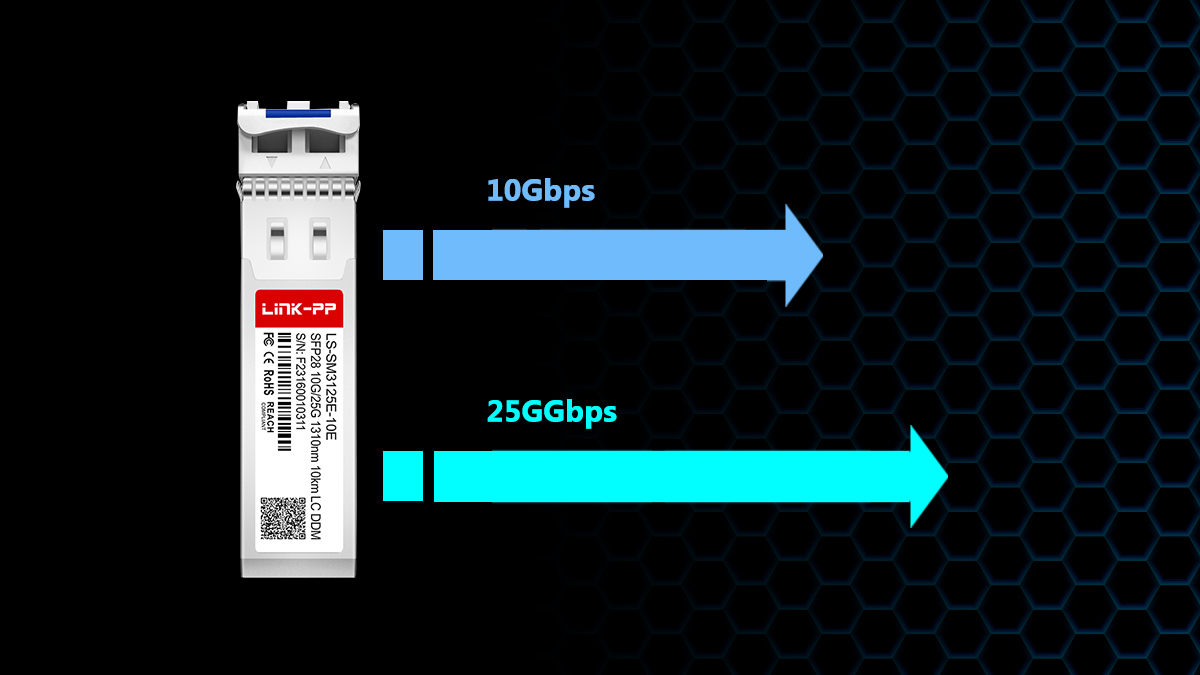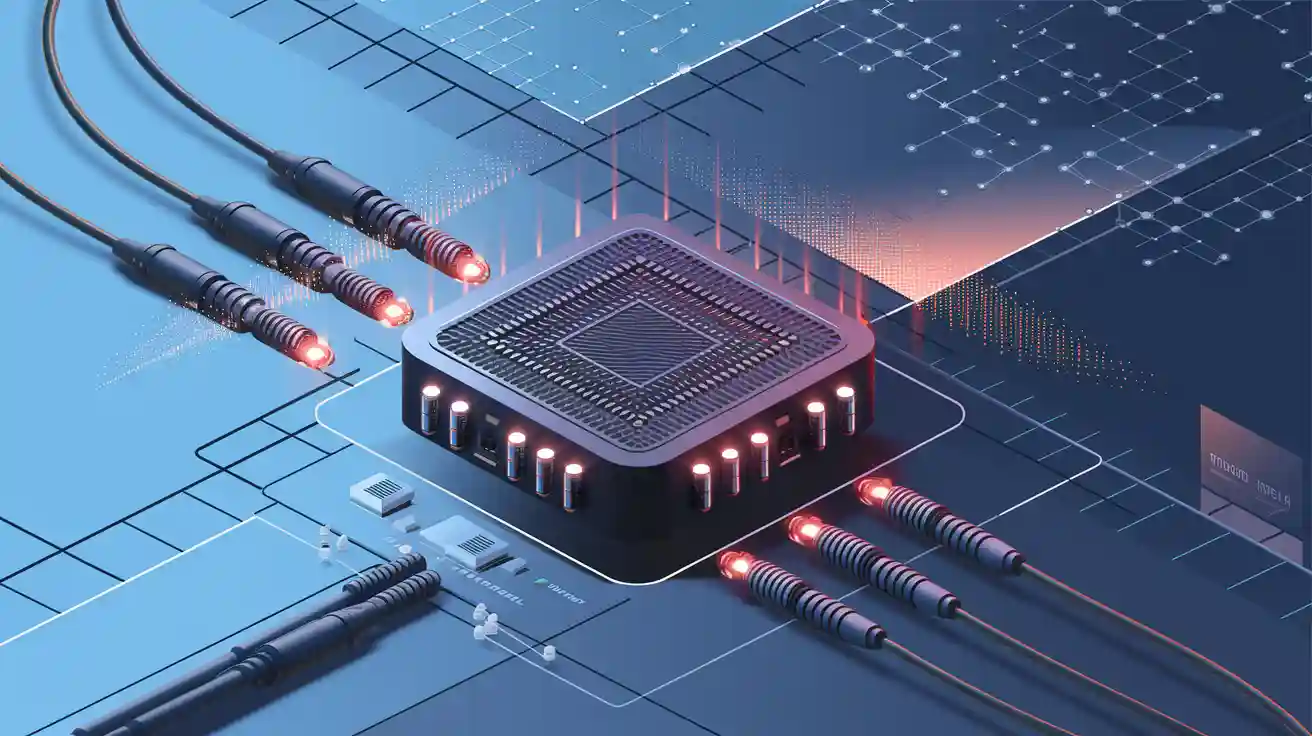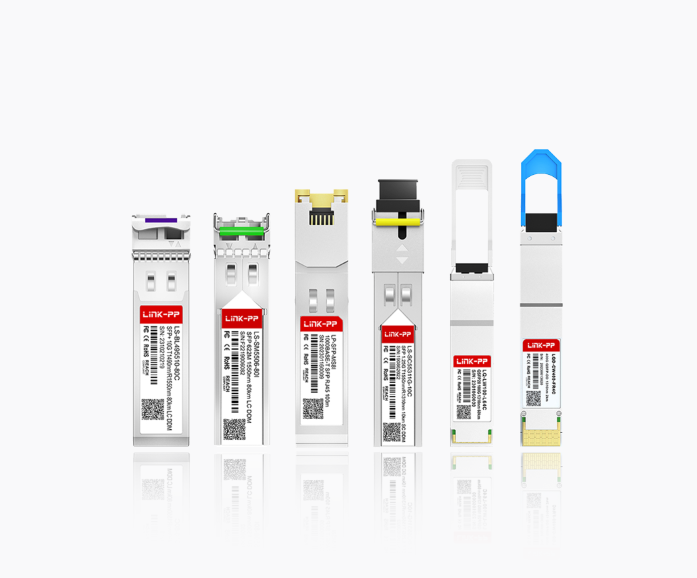
In today’s rapidly evolving network environments, flexibility and scalability are non-negotiable. Enter dual-rate optical transceivers, a groundbreaking innovation designed to bridge legacy systems and next-gen infrastructure seamlessly. Whether you’re upgrading data centers, expanding telecom networks, or optimizing enterprise setups, dual-rate modules like those from LINK-PP offer unmatched versatility. This blog dives deep into their functionality, types, benefits, and applications while highlighting why they’re a must-have for cost-effective, future-ready networking.
Key Takeaways
Dual rate transceivers work at two speeds, offering flexibility for changing network needs.
These tools make network upgrades easier, allowing smooth changes without new hardware.
They save money by cutting the need for new gear and lowering costs.
They are fast and dependable, perfect for important tasks in data centers and telecoms.
They also work with older devices, helping your network last longer.
Understanding Dual Rate Transceivers
Definition of Dual Rate Transceivers
Dual rate transceivers are optical transceivers designed to operate at two distinct data rates, offering flexibility for modern networking needs. These devices dynamically adjust their performance based on your network's requirements, ensuring efficient data transfer across various applications. For example, LINK-PP's LS-SM3125E-10C can seamlessly switch between 10G and 25G speeds, making it ideal for networks with mixed-speed demands.
The modular design of dual-rate transceivers supports multiple data rates and network standards, such as SFP28 (10G/25G) and QSFP28 (40G/100G). This adaptability allows you to upgrade your infrastructure incrementally while maintaining compatibility with existing systems. By enabling high-speed communication over long distances, dual-rate optical transceivers play a crucial role in data centers and telecommunications networks.
Comparison with Single Rate Transceivers
Dual-rate transceivers offer distinct advantages over single-rate transceivers. While single rate transceivers operate at one fixed data rate, dual-rate models can switch between two rates, enhancing their versatility. For example, a single rate transceiver may require replacement during a network upgrade, whereas a dual-rate transceiver adapts to new requirements without additional hardware.
Dual-rate transceivers also excel in modularity and performance. Their ability to support multiple data rates, such as 1G and 10G, ensures smoother network upgrades and reduced maintenance. This makes them a cost-effective solution for high-density environments like data centers and enterprise networks.

Types of Dual-Rate Optical Transceivers
Dual-rate modules are categorized based on their speed combinations, transmission distances, and form factors. Below is a breakdown of common types:
Type | Supported Rates | Max Distance | Form Factor | Typical Use Cases |
|---|---|---|---|---|
1G/10G Dual-Rate SFP+ | 1Gbps, 10Gbps | 80km | SFP+ | Enterprise networks, ISPs |
10G/25G Dual-Rate SFP28 | 10Gbps, 25Gbps | 10km | SFP28 | Data centers, 5G fronthaul |
40G/100G Dual-Rate QSFP28 | 40Gbps, 100Gbps | 2km | QSFP28 | Metro networks, video streaming |
100G/112G Dual-Rate QSFP28 | 100Gbps, 112Gbps | 40km | QSFP28 | Cloud computing, HPC clusters |
LINK-PP offers a comprehensive portfolio of dual-rate optical transceivers, ensuring compatibility with Cisco, Juniper, and Huawei platforms.
Advantages of Dual-Rate Modules
Cost Efficiency
Eliminates the need to purchase separate transceivers for different speeds, reducing inventory costs.Simplified Network Management
Reduces complexity by consolidating multiple speed requirements into a single device.Future-Proofing
Facilitates smooth transitions to higher speeds without replacing existing hardware.Energy Savings
Consumes less power compared to deploying multiple single-rate modules.Enhanced Flexibility
Ideal for hybrid networks supporting IoT, 5G, and legacy devices simultaneously.
By choosing dual-rate transceivers, you gain a solution that combines flexibility, performance, and reliability. These devices ensure your network remains robust and future-proof, even as demands evolve.
Applications of Dual-Rate Optical Transceivers
Data Centers
Supports seamless migration from 10G to 25G/40G architectures, optimizing server-to-switch connectivity.Telecom Networks
Enables 5G fronthaul/backhaul by handling mixed 10G and 25G traffic in a single module.Enterprise Networks
Bridges older 1G devices with modern 10G switches, extending the lifespan of legacy equipment.Video Surveillance
Delivers high-bandwidth video feeds while accommodating lower-speed control signals.
For industries prioritizing scalable optical transceiver solutions, LINK-PP’s dual-rate modules are engineered to meet rigorous performance standards.
Why Choose LINK-PP for Dual-Rate Solutions?

LINK-PP stands at the forefront of optical transceiver innovation, offering:
100% MSA Compliance: Guaranteed interoperability with major OEMs.
Extended Warranty: 5-year coverage for risk-free deployments.
Customizable Options: Tailored solutions for unique network demands.
Conclusion
Dual rate transceivers redefine flexibility in networking. These devices operate at two distinct data rates, allowing you to adapt to changing bandwidth demands without replacing hardware. Their modular design ensures compatibility across various systems, making them a cost-effective solution for network upgrades.
Key Takeaway: Dual rate transceivers combine adaptability, reliability, and performance. They simplify network configurations, reduce downtime, and support seamless transitions during upgrades.
By integrating dual rate transceivers into your infrastructure, you future-proof your network while meeting the demands of modern applications like cloud computing and telecommunications. Their importance in today’s networking environments cannot be overstated.
FAQ
What is the main advantage of using dual rate transceivers?
Dual rate transceivers provide flexibility by supporting two distinct data rates. This feature allows you to upgrade your network incrementally without replacing existing hardware. It reduces costs and ensures compatibility across different systems.
Can dual rate transceivers work with older network equipment?
Yes, dual rate transceivers are backward compatible. They can operate with older equipment that supports lower data rates, making them ideal for mixed-speed environments. This compatibility simplifies network upgrades and extends the lifespan of your existing infrastructure.
Are dual rate transceivers suitable for long-distance data transmission?
Yes, many dual rate transceivers support long-range communication. Models like LR4 (Long Range) are designed for extended distances, making them suitable for telecommunications and large-scale data centers.
Do dual rate transceivers require special cables?
No, dual rate transceivers typically work with standard fiber optic cables. However, you should ensure compatibility with your existing cabling infrastructure, such as LC or MPO connectors, to avoid additional costs.
Tip: Always check the specifications of your transceiver and network equipment to ensure compatibility before purchasing.
See Also
The Importance of Digital Monitoring in Optical Transceivers




